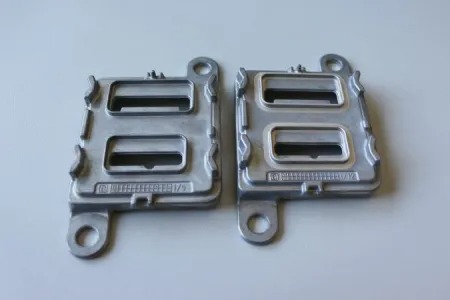For the implementation of a new laser cleaning process, Vitesco Technologies, formerly Continental Division Powertrain, was looking for a measuring device to monitor the performance and quality of laser processing in series production. The automotive supplier found it in a Bruker Alicona 3D measuring system. In addition to the 3D topography measurement, this offers a new classification software. Based on AI, the software automatically detects OK and not OK surfaces.
The core of every vehicle is its powertrain system. This is what Vitesco Technologies stands for, specialized in the production of modern powertrain technologies for clean and sustainable mobility. Optimized technologies that contribute to the reduction of nitrogen emissions (NOx) can be implemented, among other things, through intelligent solutions in exhaust gas after-treatment. This also includes the development of NOx exhaust gas sensors, which sometimes pass through critical process steps in production.

A critical process step is the application of modern cleaning technologies in which a surface is processed, e.g. by means of pulsed laser radiation and thus prepared for the following processes. “Technical Cleanliness and Cleaning Technologies” is the area of expertise of Hermann Hämmerl, Senior Process Engineer in the Central Manufacturing Technologies department of the Business Unit Sensing & Actuation (Regensburg). He coordinates process development for new technologies through to their introduction in the German automotive supplier’s worldwide network of plants. This also includes “searching for methods that allow the process results to be verified,” he explains. In this specific case, Hämmerl was responsible for the implementation of a new laser cleaning process that is intended to prepare die-cast surfaces for subsequent bonding to the electronics housing of a NOx exhaust gas sensor. The surface produced by laser has an influence on the durability of the bonding, and measurement technology should help to ensure the long-term function of the sensor in vehicle operation.
In the search for the right measuring method a hurdle had to be overcome. As this was a newly introduced process no suitable measurement or analysis methods were known that could have been used in production. In the end, they found what they were looking for in a Bruker Alicona 3D measuring device which in addition to 3D depth measurement offers a surface classification software that automatically distinguishes between OK and not OK surfaces.

Automatic Recognition Whether OK or Not OK Component

Even minimal process fluctuations in laser processing lead to the smallest changes in the micro surface quality of the processed die-cast surface. These can already have a critical influence on the durability of the bonding. In the evaluation of various measuring devices, great importance was therefore attached to the ability to detect even very small differences in roughness. In this way, it can be verified whether specified tolerances are maintained even if process changes are made. Conventional profile-based methods could not sufficiently quantify the specific roughness of the die cast surface, so Vitesco Technologies switched to optical metrology for this application and today uses Bruker Alicona’s technology in series production. The InfiniteFocusSL measuring system detects even the smallest differences in roughness of the laser treated die casting surface. Therefore, deviations in the laser cleaning process can be detected quickly and it is possible to react promptly, e.g. by adjusting system parameters.
The measuring system offers a further benefit which contributes significantly to the efficiency of the entire process chain. It is an automation option based on AI, which automatically distinguishes an OK surface from a not OK. surface. The corresponding evaluation is based on a combination of 2D texture data and 3D topography data, which are analyzed during the inspection process. Using a so-called classifier, both positive and negative examples (“golden samples”) are trained to the measuring system or classification software, which enables the automatic detection of OK and non-OK die cast parts in near-series monitoring.
Automatic Measuring Sequence For Each Operator In Production
A “production-suitable” measuring system has many facets. On the one hand, there is the need to provide a corresponding robustness, measuring speed and repeatability for use in production. On the other hand, there is the need for a measuring sequence that enables every operator in production to carry out a measurement without having specific knowledge of the measuring system. Automation is a future-oriented keyword at Vitesco Technologies. Currently, they are working with a semi-automatic measurement, but further steps towards full automation are already under discussion. Vitesco has already evaluated other Bruker Alicona measuring equipment and has come to the conclusion that the Cobots can be used here without restrictions.
For more information: https://www.alicona.com/
Tags: 3d vina, AI and 3D Measurement Technology Ensures Reliable Powertrain Technologies, hiệu chuẩn, hiệu chuẩn thiết bị, máy đo 2d, máy đo 3d, máy đo cmm, sửa máy đo 2d, sửa máy đo 3d, sửa máy đo cmm
